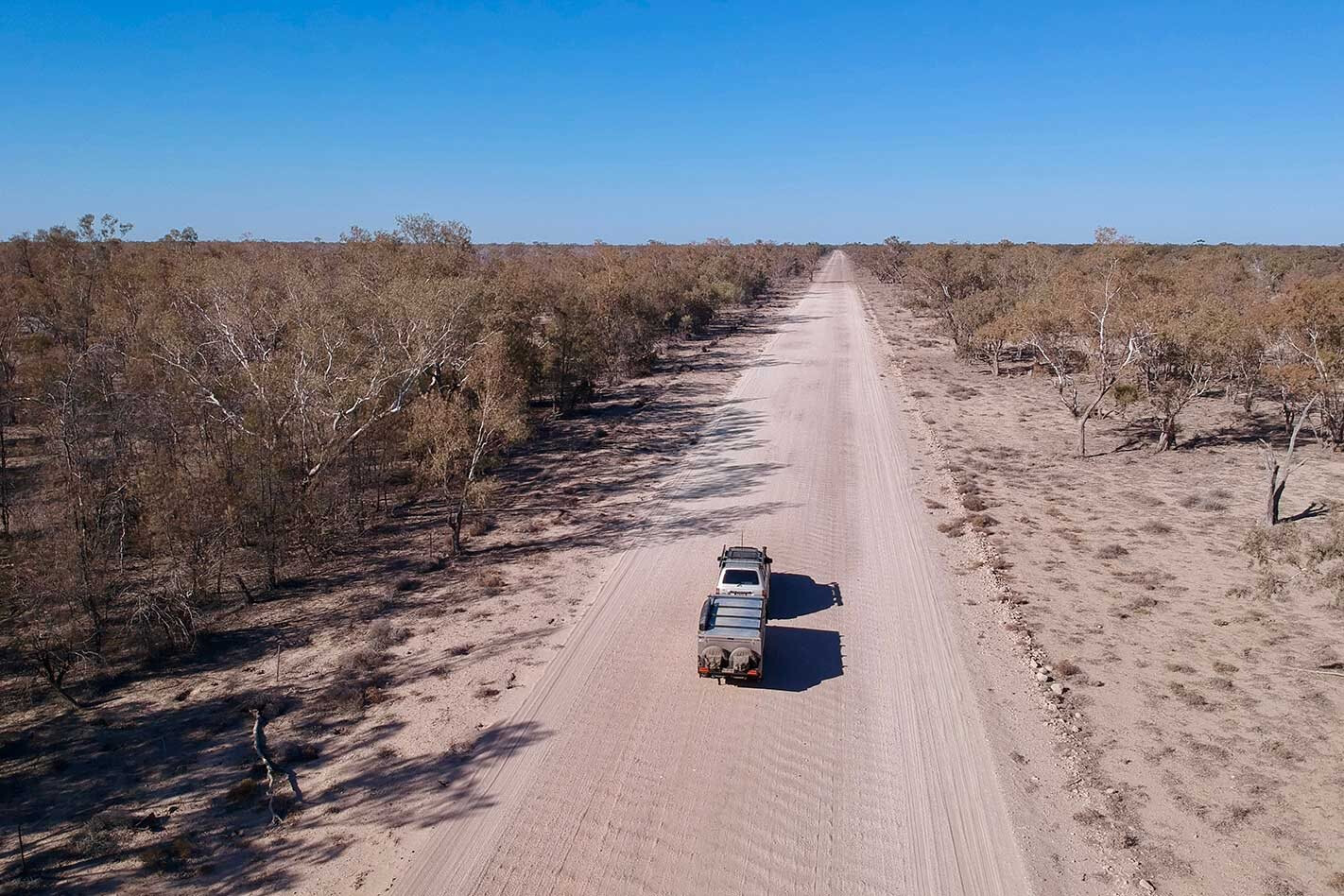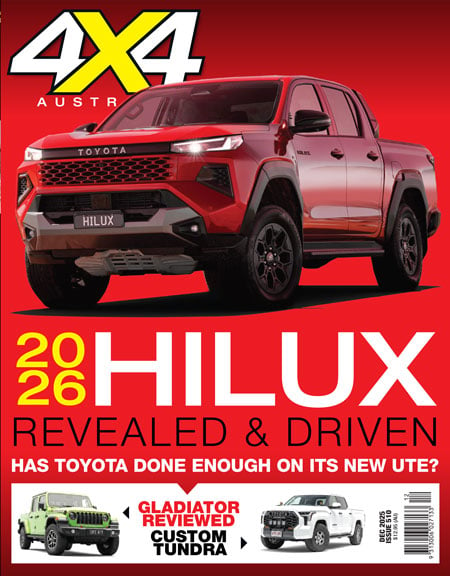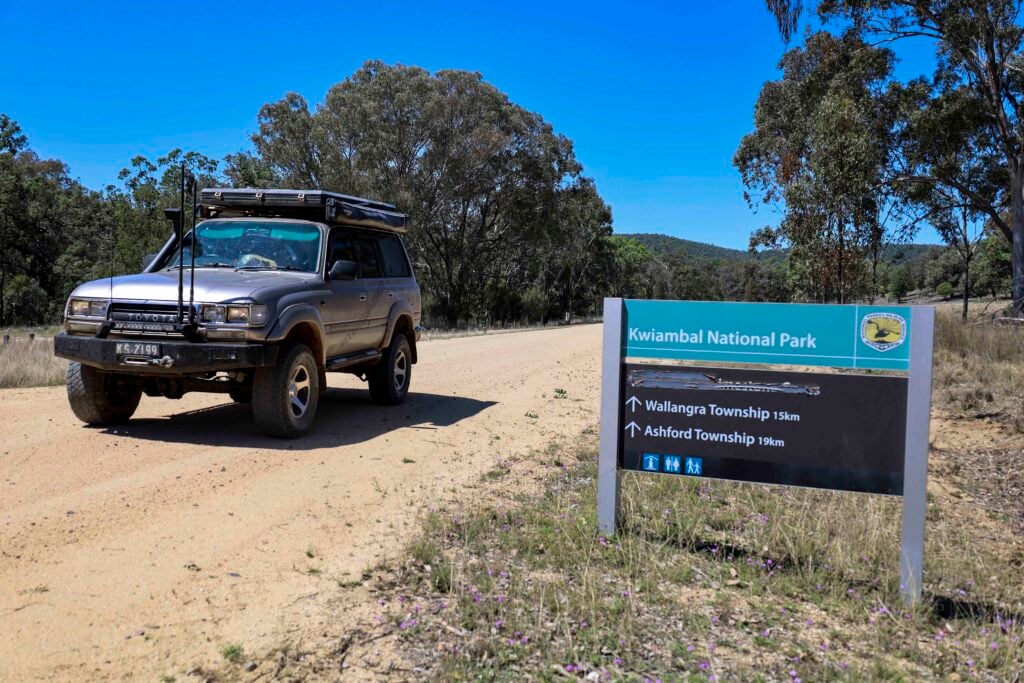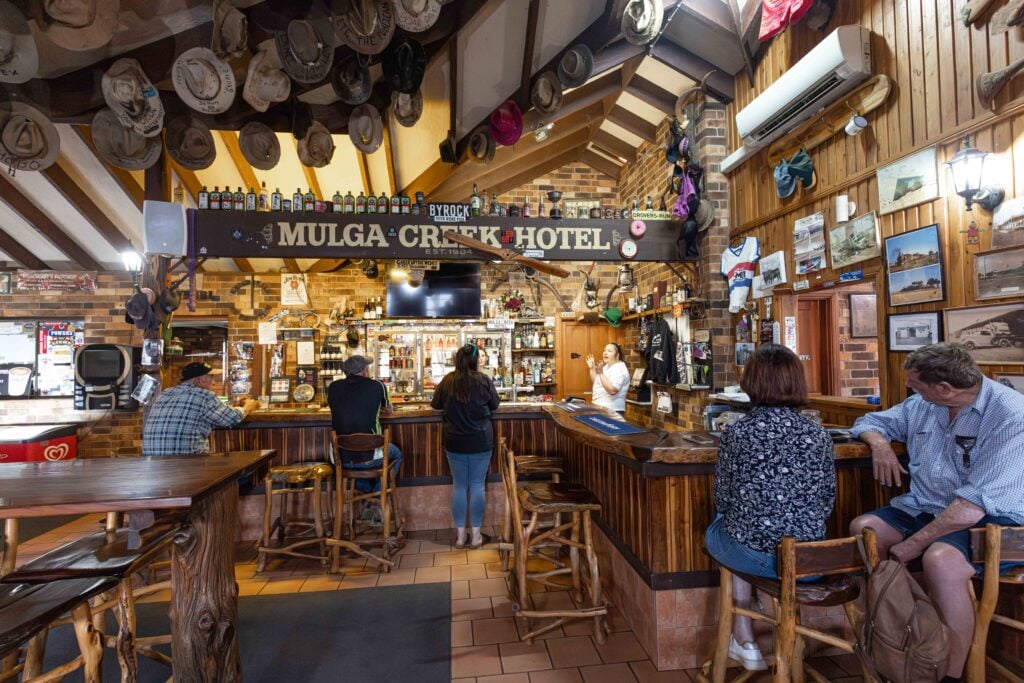Lightning Ridge is one of those iconic places in Australia you need to visit at least once in your life to discover its history, natural yet harsh beauty, and the rough characters that call this place home. Most travellers know that Lightning Ridge (or The Ridge, as known by locals) is home to some of the best opal in the world and where lost people seem to go to in an attempt to escape their problems.
There’s no doubt it’s a bloody hot, remote and isolated area, but The Ridge seems to be busy all the time with travellers passing by or making it their own destination. We made the mistake of turning up without booking accommodation in advance at one of the four parks in town. Luckily, just 3km away, is Lorne Station, which is an old shearing property that has opened its gates to campers.

With nearly 4000ha to camp on we were guaranteed a spot at this down-to-earth park with basic facilities, where you can set-up for a day or for several weeks. Lorne Station itself allows you to fossick on its mullock heaps around the property and, while we didn’t get lucky finding any colour, the managers reckon plenty of others have.
These days Lightning Ridge is a tourist town, with coffee shops, art galleries and, in the cooler months, parks packed with southerners who flock here to soak in the artesian water that comes from nearly a kilometre underground.
Some say that soaking in this mineral-enriched water heals you of your aches and pains and may even add a few years to your life, but all we know is that once you get past the sulphur smell it certainly feels good to take a dip in the 40°C water.
Hit up the local tourist information centre and they will be more than happy to load you up with an array of booklets and advice covering the self-guided tours around town and its outer reaches. Of these, the most popular around-town tours are the four car doors.
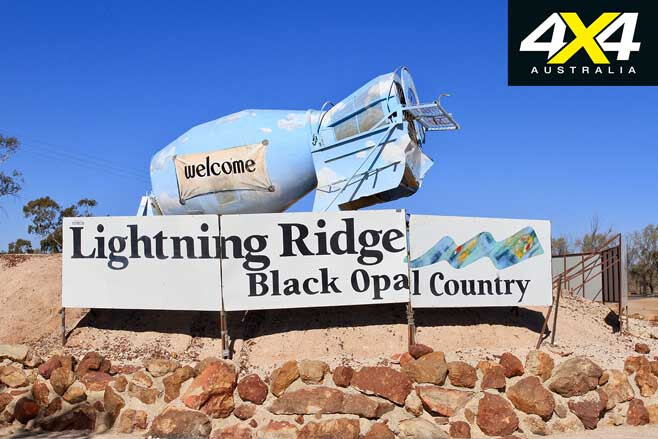
There are green, red, yellow and blue car doors scattered around town, all with a different theme, and you follow these and discover different quirky highlights. Most take around 30 minutes, and all start in the middle of town.
Depending on which one you take, they offer up tidbits such as history, unusual houses made of weird materials (like the bottle house or the castle complete with a moat), or a drive to a tin church that was built for a movie, while others take you to some of the original mines, lookouts, old car relics and much more.
The area around Lightning Ridge was used by pastoralists for huge sheep stations in the 1800s and opal wasn’t discovered here until 1901, when a boundary rider named Jack Murray picked up some ‘pretty rocks’. Fired from his job, he spent Sundays digging up these rocks, and later on he and a mate walked 700 miles to White Cliffs and sold their small diggings – and the rush was on.
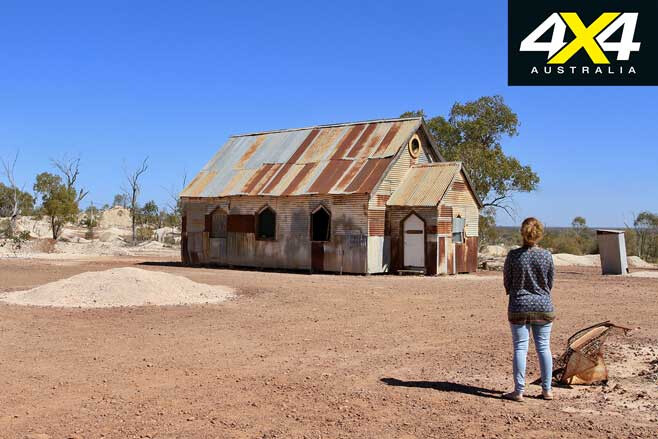
It was hard work in the early days when miners dug the hard ground by hand, then had to haul the dirt and rock to the surface. On the yellow car door tour, you’ll be led to one of the original and largest open-cut opal mines in NSW, and reportedly the richest black opal source ever found. Here at Lunatic Hill it was said that men had to dig three times deeper than other areas to find any fortune.
As word spread of black opal being found here, a village called Nettleton grew nearby, down on the Three Mile Flat workings. Over the next 60 years the ‘hole’ got so big it became too unsafe to work around, but they kept going and in 1986 a huge hand-size black opal was found, which had an estimated value of $6m. Today the area is fenced off to the public, but several viewing areas provide a good view over this massive hole.
From the air, Lightning Ridge looks like it’s covered in a million mole hills, but these are all mullock heaps – dirt taken from vertical shafts deep in the ground where miners are looking for that seam of colour … and hopefully their fortune.
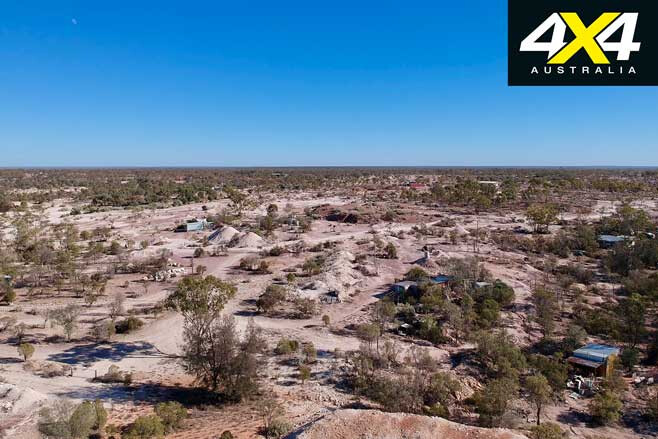
Mine claims around here are generally 50 x 50m², in which any number of holes can be sunk. Wandering around the mines on the claims is a big no no, and at night it would be especially dangerous to do so.
Wanting more than the normal tourist route we were told about ‘other’ opal fields about 100km to the west of Lightning Ridge, called the Grawin opal fields, where things were a lot tougher. The drive across to the Grawin via Cumborah is all tar, but things got pretty rough and ugly as soon as we hit the turn-off into the Grawin. There’s no shire council out here to maintain the roads, and most locals leave there tyres at 20psi due to the unforgiving and relentless corrugations.
The 20km drive into the fields is like something out of a Mad Max movie, with 40-plus-year-old trucks working the area, unregistered, with no doors and with weird mining gear welded onto the back.
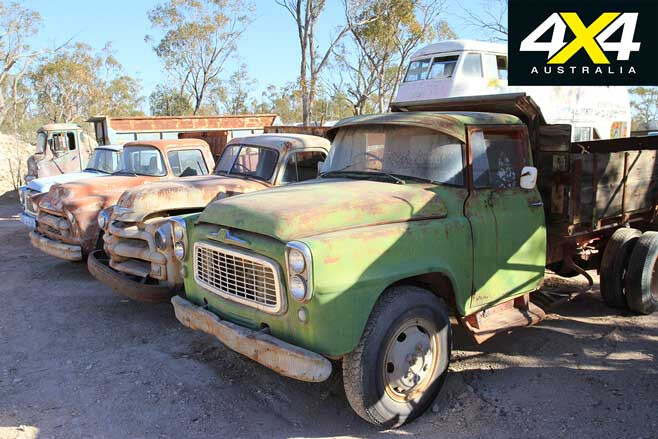
There’s nothing pretty about this area as it’s all coated in a whitish dust reminiscent of baby powder – it’s on the trees, the makeshift dwellings and the vehicles, and, trust me, it gets in everywhere.
A few years ago someone had a vision out here and created the ‘Pubs in the Scrub’ after visitors kept dropping in looking for something to do. Nowadays there are several ‘pubs’ (more like licenced sheds) where you can grab a feed and a coldie.
We found that you can free camp behind these as long as you spend a few dollars inside, and for that they will give you the heads-up where you can noodle or fossick in legal mine dumps around the area. The two most popular spots are up near the Sheepyards (one of the original mine areas) where, after 50 years of mining, the piles of rock and dirt are as large as a footy field and more than 10m high.
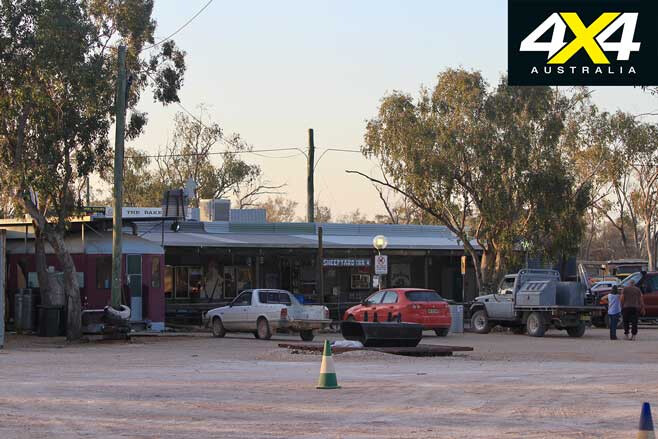
Every few hours a mine truck will drive to the top of these piles and dump a few more tonnes of rubble – just don’t get in their way. It’s a unique community where they work hard looking for that elusive big opal full of colour.
In 1905 the first opal was found nearby at Hammond Hill, but it wasn’t until 20 years later that the first substantial piece of rock created an ‘opal rush’ to the area. During the war-era, mining was conducted by candlelight and, as per The Ridge, it was all dug by hand using a pick and shovel. It wasn’t until the 1950s that ‘proper’ tools, jack hammers and trucks made an appearance in the area, making things a little easier.
By the 1990s, better gear like giant vacuum cleaners and hydraulic equipment made life much easier. These days the trucks and machinery have the right-of-way on the road, and we didn’t see too many number plates on anything – the rough roads must shake them off! Local rumour has it that when the local constabulary show up for a drive around, the town goes quiet and it’s hard to find anyone about. Maybe that’s why there’s no real population count.
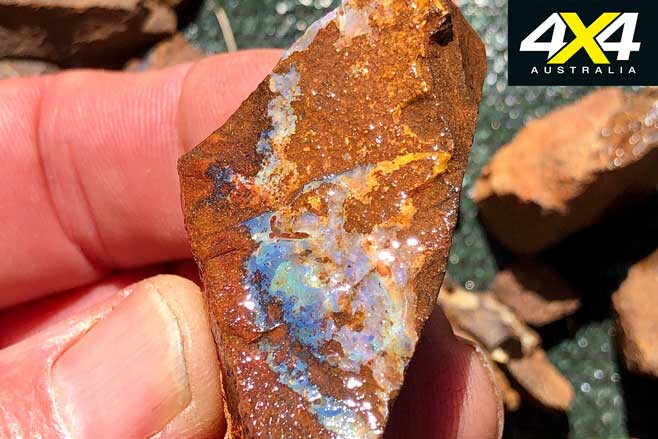
Another ‘pub’ out here is the Club in the Scrub, where you can also free camp, book a basic cabin, have a yarn to a local (maybe get a few opal mining tips), play a round of outback golf, have a feed or just relax and take in the memorabilia adorning the walls.
The Lightning Ridge area is alive with quirky and unique characters, tours, signs and more, and anyone who takes a trip to this iconic area will not be disappointed.
Travel Planner
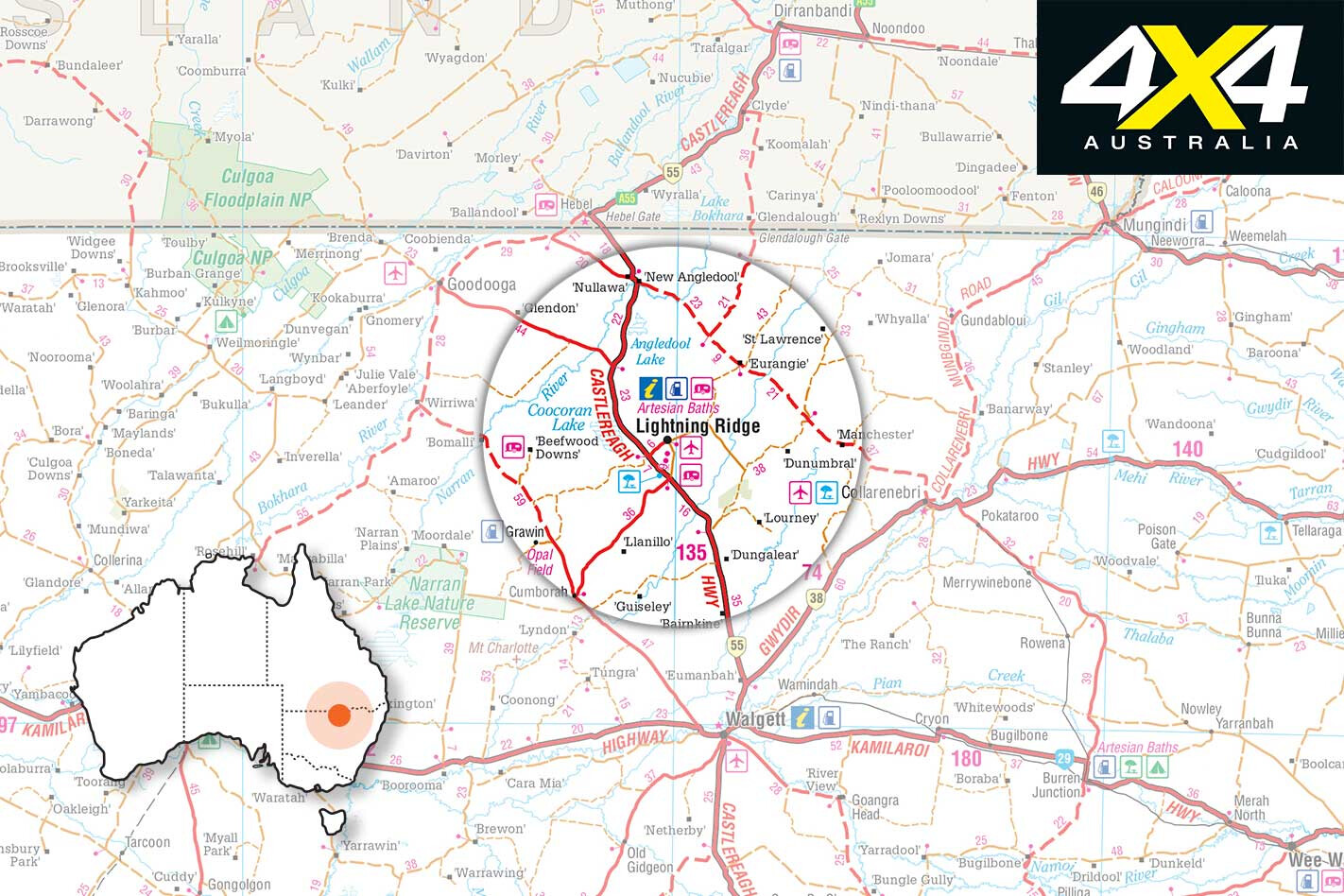
General information: lightningridgeinfo.com.au Lorne Holiday Station: (02) 6829 1869; www.lornestation.com Club in the Scrub: (02) 6829 3810; www.theclubinthescrub.com.au Sheepyard Inn: (02) 6829 3932 Glengarry Hilton: (02) 6829 3983

